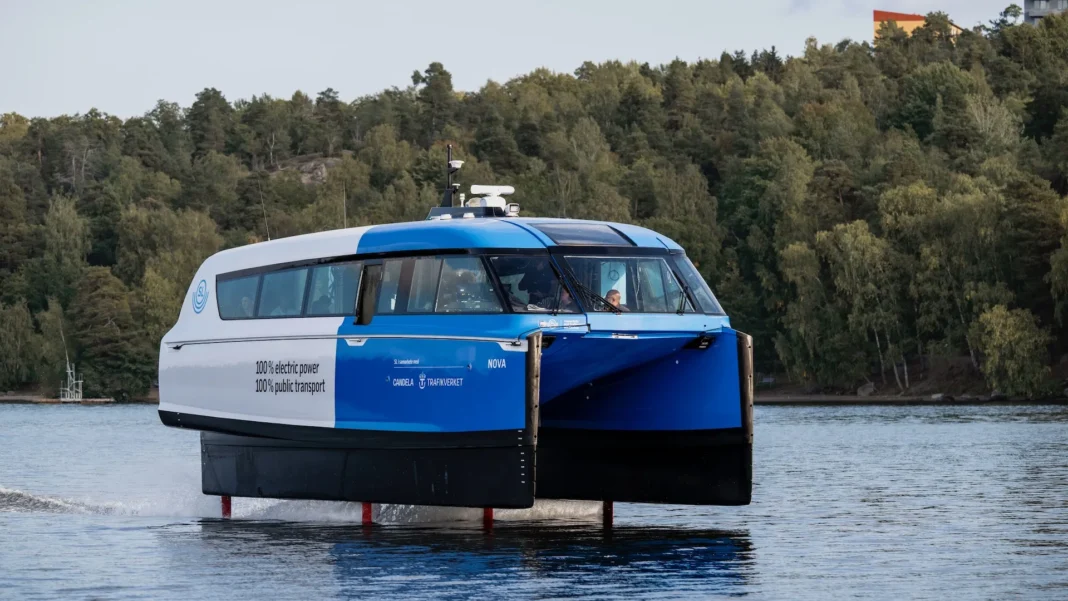Sweden is the home of Volvo and Polestar, but the Scandinavian country is electrifying more than cars.
On Tuesday, an electric hydrofoil ferry service began operating in Stockholm, shuttling commuters between the 14 islands that make up the Swedish capital. The service was inaugurated when 25 commuters in the suburb of Ekero boarded the electric hydrofoil, named Nova, reports the Associated Press.
The first of the P-12 hydrofoils from electric boat manufacturer Candela to enter service with Stockholm’s public transit operator SL, the Nova skimmed about three feet above the water and covered the nine-mile route to Stockholm’s city hall in 30 minutes, versus 45 minutes with diesel ferries.

Candela electric hydrofoil ferry enters service in Stockholm
Hydrofoils lift their hulls out of the water at speeds, relying on extended struts (the foils) for control. This reduces drag, which, in the case of the Nova, contributes to an 80% cut in energy consumption compared to conventional vessels, Candela boss Gustav Hasselskog said in a statement. An added benefit is that the hydrofoil leaves no wake, so the Nova is exempt from the speed limit in Stockholm waters.
That allows the Nova to get closer to its cruising speed of about 29 mph—faster than conventional boats, according to Candela. It’s designed to carry 25 passengers, with one wheelchair space.
Just as electric buses could cut carbon emissions in other cities, electric boats like the Nova could make a big dent in emissions from public transit in Stockholm. According to the AP, ferries have been the fastest-growing mode of public transit since the coronavirus pandemic.

Candela electric hydrofoil ferry enters service in Stockholm
Candela also has a partnership with Polestar, which in 2022 made a deal to supply the company with batteries and charging tech. It’s part of Polestar’s plan to develop its own batteries and propulsion systems.
There are a number of electric ferries in use beyond Stockholm, but the up-front cost of putting them into service can be challenging. Cruise ships are likely too large for battery propulsion, although they’re starting to branch out into hybrid systems.

